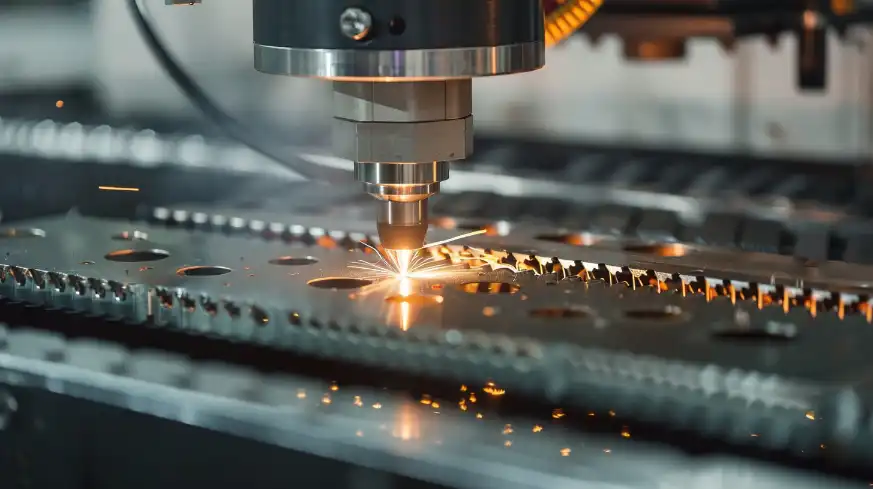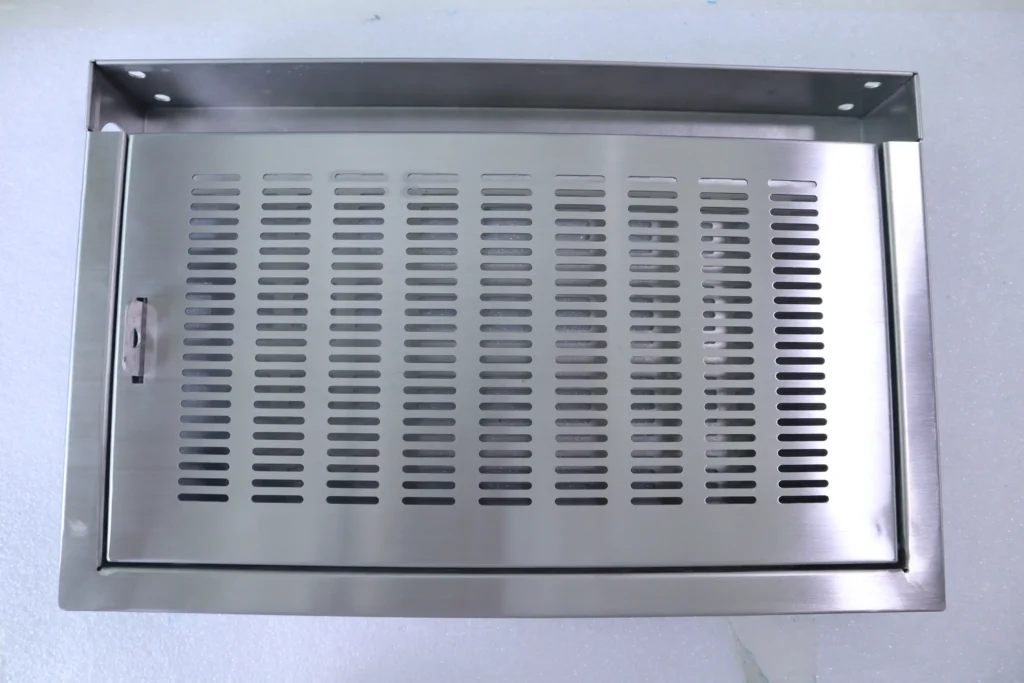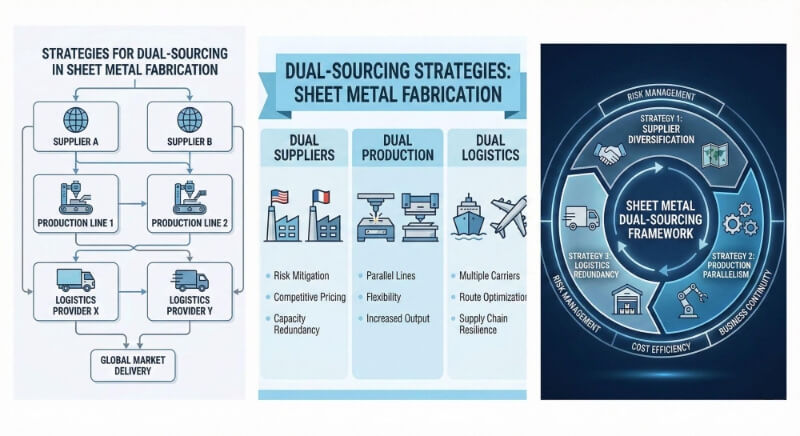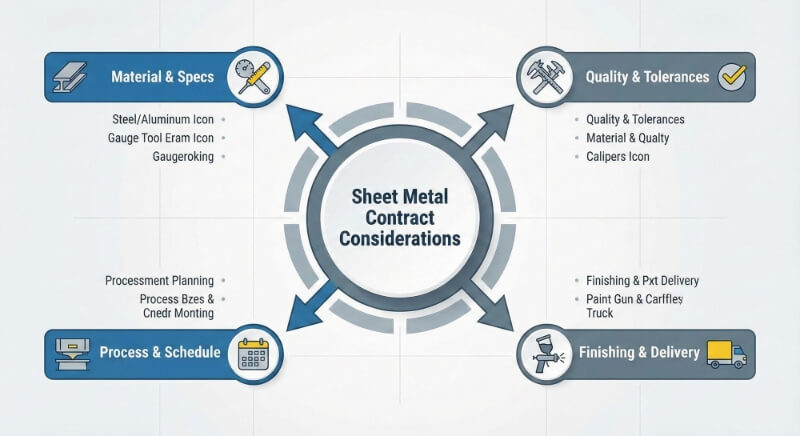Stainless steel is widely used in many industries, but cutting it effectively requires precision and the right tools. Laser cutting might be the solution if you’re struggling with clean and efficient cuts. Laser cutting offers fast, precise results, but knowing how it works is key.
Laser cutting is a popular choice for industries where precision is critical. It can handle complex designs with ease. Let’s explore how it works and why it’s so efficient.
What is Stainless Steel Laser Cutting?
Laser cutting uses a concentrated laser beam to heat and melt the stainless steel, allowing for highly accurate cuts. The laser follows a computer-guided path, offering consistent, repeatable results.
This method is ideal for creating complex shapes and fine details, providing clean edges with minimal heat distortion. Laser cutting doesn’t physically touch the material, reducing wear on the tools and ensuring the process is efficient and precise.
Key Components of a Laser Cutting System
A laser cutting system has several key components that produce clean and accurate cuts.
Laser Source
The laser source generates the focused beam of light used for cutting. It can be powered by a CO2 or fiber laser, each offering distinct advantages depending on the material and cutting requirements.
Cutting Head
The cutting head holds the laser lens and focuses the laser beam onto the material. It is responsible for directing the laser beam precisely where it is needed to cut the stainless steel. The cutting head also moves along the material to follow the cutting path.
CNC Control System
The CNC system controls the movement of the laser cutting machine. It interprets the design file and guides the cutting head along the correct path. The CNC system also adjusts the laser’s intensity and speed to optimize the cutting process based on material thickness and type.
How to Laser Cut Stainless Steel?
Laser cutting stainless steel begins with a high-powered laser beam that melts or vaporizes the material along a defined path. The cutting process is controlled by a computer program, which guides the laser in following the design.
The stainless steel is usually placed on a flat surface, and gases like oxygen or nitrogen assist in the cutting by blowing away molten metal from the cut area. This allows for precise, smooth cuts with minimal thermal distortion.
Key Stages of the Laser Cutting Process
The laser cutting process involves several key stages to ensure the desired results.
Material Selection
The material’s thickness, grade, and surface finish all play a role in determining the optimal cutting parameters. Stainless steel with a smooth surface and uniform thickness is easier to cut, resulting in better quality cuts.
Setup and Configuration
Before starting the cut, the machine must be set up properly. This includes adjusting the laser’s power settings, cutting speed, and gas flow.
Cutting and Cooling
Once the setup is complete, the laser cutting machine begins the process. The laser melts the material along the programmed path, and cooling gases prevent the stainless steel from overheating and warping.

Types of Lasers Used for Stainless Steel Cutting
There are two main types of lasers commonly used in cutting stainless steel: CO2 lasers and fiber lasers.
CO2 Lasers
CO2 lasers are gas-based lasers ideal for cutting thicker stainless steel materials. They have a longer wavelength and can provide high-quality cuts on various metals, including stainless steel. CO2 lasers offer good beam quality, but their systems are larger and more expensive.
Fiber Lasers
Fibre lasers are solid-state lasers that transmit light through fibre optic cables. They are known for their efficiency, compactness, and ability to cut through stainless steel with high precision. They are particularly effective for thinner materials and have lower operating costs than CO2 lasers.
Factors Affecting Laser Cutting of Stainless Steel
Several key factors influence laser cutting stainless steel. Understanding them is crucial for getting the best results.
Material Thickness
Thicker materials require more laser power and slower cutting speeds to ensure a clean cut. The process for thinner materials is quicker and uses less power.
As thickness increases, more energy is required to melt the material. This can lead to longer cutting times and higher costs.
Laser Power and Speed
The laser power and cutting speed must be balanced. More power can speed up the cutting process but can also cause rougher edges or excessive heat. This heat can distort the material.
Slower cutting speeds can improve precision, especially for detailed designs. However, slower speeds can also increase the risk of heat-affected areas.
Cutting Gas Selection
It is also important to choose the right cutting gas. Gases like oxygen and nitrogen are commonly used, each with different effects.
Oxygen cuts faster but may leave rougher edges. Nitrogen creates cleaner cuts with smoother edges but is slower and more expensive.
Cutting Edge Quality and Tolerance
The quality of the cutting edge depends on several factors. These include laser power, cutting speed, and material thickness. While laser cutting usually produces clean edges with minimal burrs, excessive heat can make the finish rough or cause warping.
Tight tolerances are also essential. In some cases, especially for critical parts, precision is a must. Proper machine setup and fine-tuning can help maintain tight tolerances and high-quality cuts.
Advantages of Laser Cutting Stainless Steel
Laser cutting stainless steel offers numerous benefits, making it a preferred method for many industries. Here are the key advantages that make laser cutting an excellent choice for stainless steel fabrication.
Precision and Accuracy
Laser cutting is well-known for its accuracy. The laser beam can cut intricate patterns and fine details with great precision. It can also achieve tight tolerances, which is hard to match with traditional cutting methods.
Speed and Efficiency
Laser cutting is a fast and efficient process. It can handle high production volumes without losing accuracy. The machine cuts continuously with little downtime between cuts, making it cost-effective for both small and large production runs.
Ability to Cut Complex Shapes and Designs
One major advantage of laser cutting is its ability to easily cut complex shapes and designs. Whether it’s sharp angles, curves, or detailed holes, laser cutting can follow any design without special tools.
Clean Edges and High-Quality Finish
Laser cutting delivers clean edges and a high-quality finish, reducing the need for extra processing. The laser beam melts or vaporizes the material precisely, leaving smooth, burr-free edges.

Challenges and Solutions in Laser Cutting Stainless Steel
While laser cutting stainless steel has many benefits, it also presents some challenges. Below are some common issues and possible solutions to help achieve the best results.
Material Deformation and Warping
One challenge in laser cutting stainless steel is the risk of material deformation and warping. The heat from the laser can cause the material to expand and contract unevenly, leading to distortion at the edges.
Solution: To reduce warping, adjust the cutting speed and laser power. Cooling methods, such as air or nitrogen, can help manage the temperature and prevent heat buildup.
Cost Considerations
Laser cutting can be more expensive than traditional methods, especially when using high-powered lasers or cutting thicker materials. The cost of the machine, energy consumption, and gases like nitrogen or oxygen can make it more costly for some projects.
Solution: To lower costs, manufacturers can optimize cutting parameters to improve efficiency. Laser cutting is most cost-effective for larger production runs since the setup costs are spread over many parts.
Thickness Limitations
Laser cutting works well for thin stainless steel, but as the material thickness increases, the process becomes slower and more challenging. Cutting thicker stainless steel requires higher laser power, which increases cutting time and heat input.
Solution: Adjusting parameters like cutting speed and laser power can help maintain efficiency and quality when working with thicker materials. Higher-powered fibre lasers are particularly effective, as they provide better performance for thicker stainless steel.
Surface Finish Issues
While laser cutting typically produces clean edges, surface finish problems can arise, particularly with thicker materials. Excessive heat can lead to oxidation, rough edges, or burrs, which affect the final product’s quality.
Solution: Use nitrogen as a cutting gas to improve the surface finish. It prevents oxidation and creates cleaner cuts. Adjusting cutting speed and laser power can minimize heat-affected zones and enhance the finish.
Applications of Laser Cutting Stainless Steel
Laser cutting is widely used across various industries because it offers precision, speed, and versatility. Here are some key sectors where laser cutting of stainless steel is crucial.
Aerospace Industry
In the aerospace sector, stainless steel parts must meet strict standards for strength and precision. Laser cutting is perfect for producing complex components like structural frames, brackets, and enclosures.
Automotive Manufacturing
Laser cutting is widely used in automotive manufacturing to produce parts like chassis, engine components, and body panels. The method allows for intricate designs, lightweight parts, and a smooth finish, essential for the automotive sector.
Medical Device Production
Stainless steel is used in the medical device industry for parts like surgical instruments, implants, and diagnostic equipment. Laser cutting provides the precision needed for these detailed and intricate components.
Architectural
Laser cutting is commonly used in the architectural industry to create decorative metal panels, facades, and custom features. Stainless steel’s durability and aesthetic appeal, combined with the precision of laser cutting, make it an excellent choice for functional and artistic applications.
Conclusion
Laser cutting stainless steel delivers precision, speed, and versatility for aerospace and consumer goods industries. With clean cuts, minimal finishing, and the ability to handle complex designs, it’s a cost-effective solution for prototypes and mass production.
Need high-quality laser-cut stainless steel parts? Get a fast quote today! Our experts will help you optimize design, material, and cost for your specific needs.
FAQs
What gas is used for laser cutting stainless steel?
The most commonly used gases for laser cutting stainless steel are oxygen, nitrogen, and air. Oxygen is used for faster cuts, producing a slightly rougher edge, while nitrogen provides cleaner, smoother cuts but at a slower speed. Air is sometimes used for thinner materials as a cost-effective option.
What is the best laser for stainless steel?
The best laser for cutting stainless steel is a fiber laser. Fibre lasers are efficient, offer high cutting speeds, and produce high-quality cuts with minimal heat distortion. They are particularly effective for cutting thinner stainless steel and provide lower operating costs than CO2 lasers.
What is the maximum thickness of steel that can be laser cut?
The maximum thickness of stainless steel that can be laser cut depends on the power of the laser and the material’s type. Generally, fiber lasers can cut stainless steel up to 20mm thick, while CO2 lasers can cut materials up to 25mm thick.
How much does it cost to laser-cut stainless steel?
The cost of laser cutting stainless steel depends on material thickness, laser power, cutting speed, and design complexity. On average, the cost can range from $0.50 to $2.00 per minute of cutting, with thicker materials or intricate cuts increasing the price.
More Resources:
Types of Lasers – Source: Laserax
Advantages of Fiber Lasers – Source: Findlight
Hey, I'm Kevin Lee

For the past 10 years, I’ve been immersed in various forms of sheet metal fabrication, sharing cool insights here from my experiences across diverse workshops.
Get in touch

Kevin Lee
I have over ten years of professional experience in sheet metal fabrication, specializing in laser cutting, bending, welding, and surface treatment techniques. As the Technical Director at Shengen, I am committed to solving complex manufacturing challenges and driving innovation and quality in each project.




